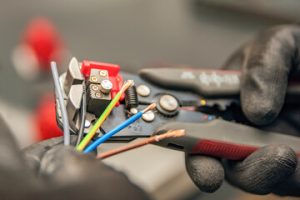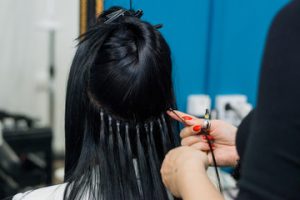When choosing a gate for your property, there are several factors to consider. Metal fence gates are durable in all weather conditions and add a level of security to your home or business while providing a modern, sophisticated look.

Wrought iron is a highly desirable choice because it can be molded into various styles and patterns. It’s also more malleable than steel, which gives welders greater flexibility. Keep reading the article below to learn more about Metal Gate and Fence.
If you want to keep intruders away from your home or business, a metal fence is an effective deterrent. Steel security fences are especially durable and offer a high level of protection against break-ins, acting as a physical barrier that is difficult to penetrate or cut. Aside from their strength, they also feature customizable design options and can be combined with other security features such as gate locks.
Alternatively, you can install an electric fence, which allows authorized personnel to enter a property without having to open the gates. These fences are equipped with sensors that activate an alarm when someone approaches. They are ideal for areas that require high levels of security, such as correctional facilities or military bases. The electric fences can be customized with different pulse rates and voltage levels, making them versatile enough to suit your specific needs.
Aside from enhancing privacy and security, a modern gate can add curb appeal to your home. A black gate is sleek and can reduce the likelihood of people looking into or wandering onto your property, while complimenting almost any architectural style. Moreover, a gate can help increase the resale or rental value of your property.
Metal gates are more robust than wooden gates and provide an added layer of security, while ensuring that only the correct code or key can open them. In addition, they are resistant to weather elements and require minimal maintenance. They are also available in a wide range of styles, from classic wrought iron to sleek contemporary designs. Moreover, metal gates are often compatible with wooden fences to create a cohesive aesthetic.
Similarly, steel bollards are a popular security measure that can be installed near government buildings, airports, and other high-security sites. These sturdy posts are designed to withstand vehicle-ramming attacks by blocking the path of vehicles, thereby protecting the surrounding area from potential threats. These barriers can be combined with other security measures, such as surveillance cameras, to enhance the safety of a facility. Additionally, they are affordable and can be easily maintained by a professional repair service.
Durability
Wrought iron fences and gates offer a high degree of durability that deters criminal activity. Wrought iron is not only durable, but aesthetically appealing as well. This type of metal is forged from iron ore through a process called “melting”, which creates a material that is strong, but can also be shaped to meet various design requirements. This unique quality has led to the development of a wide variety of styles for both gates and fences that are wrought iron.
In addition to their aesthetic appeal, wrought iron is resistant to corrosion. This feature allows it to resist the formation of rust, which can be caused by environmental factors such as humidity, salt and pollutants. This type of corrosion can lead to damage to the structural integrity of iron fences, and if left untreated can cause significant losses in value and functionality.
Iron fences can be protected against corrosion through regular cleaning, application of protective coatings and routine maintenance inspections. A regular cleaning with mild soap and water can help to remove any build-up of salt, dirt or other corrosive materials that may be present. Regular inspections can also detect any signs of rust that are not yet visible, allowing for prompt repair and prevention of further deterioration.
While some types of metal are more resilient than others, steel is a popular choice for homeowners due to its strength and versatility. Mild steel is not as prone to corrosion as iron, but it can still deteriorate quickly in humid or coastal environments without proper treatment. Wrought iron is less prone to corrosion than mild steel, but it requires more care and attention to maintain its appearance.
For added protection, homeowners can add additional features to their wrought iron fences and gates. For example, they can incorporate lighting systems and motion sensor devices to prevent criminal activity and alert them of potential intruders. Some even include automation technology to open their gates remotely using smart systems. This is an easy way to add a high level of security and convenience to your home, and can be incorporated into any style of fencing.
Aesthetics
A fence’s aesthetic impacts the look of a property and is one of the first things passersby notice. Since the gate is where security theory meets practical reality, it’s crucial that a fence gate design genuinely complements your property’s current aesthetic while also serving its intended purpose of increasing privacy or improving safety. Fortunately, there are numerous entrance gate designs to choose from that do just that!
Contemporary metal fences, including aluminum and wrought iron, offer sleek, sophisticated appearances. Their durable construction allows them to withstand extreme temperatures and resist fading over time. Plus, they’re easy to customize in terms of panel styles, heights, and decorative elements.
For a more natural look, wood fences provide an excellent choice. Cedar and redwood stand out as particularly attractive options, thanks to their inherent resistance to decay, insects, and harsh weather conditions. Plus, their rich color variations and distinctive grain patterns add visual appeal to any outdoor space.
If you want to go all out, consider adding a decorative gate to your fence. Ornamental gates are available in a range of styles, from simple black to a wrought-iron finish. They’re a great way to increase your home’s curb appeal and can be matched to nearly any home’s architectural style.
Additionally, many metal fences come with modern gate features that reduce the likelihood of intruders and vandalism. These include security keypads, alarm systems, surveillance cameras, and automated gate openers. Depending on your needs, you can even opt for fencing with integrated lighting for improved visibility at night.
Finally, some metal fences are designed to support climbing plants, allowing you to combine the natural beauty of nature with the elegance of a metal gate. Some also have unique acoustic properties, reflecting urban noise away from your home while absorbing or dampening it. With the right combination of functionality, durability, and aesthetics, a well-chosen fence gate can greatly enhance your property’s character. So make sure to take the time to explore the various options available before deciding on the ideal gate for your home.
Maintenance
Metal fences require less maintenance than wood and are also a more durable option. However, they still need periodic cleaning and rust prevention. While you can perform some of these tasks yourself, a professional service should be consulted for any major issues, such as widespread rust or sections that are beginning to bend and sag.
A metal gate can be made from a variety of materials to suit your aesthetic preferences and budget. Our blacksmiths work in wrought iron, aluminum, bronze, and stainless steel to create one-of-a-kind designs that are both functional and decorative. We can also add automation options, security features like electronic keypads and locks, and lighting solutions to increase visibility and enhance ambiance at night.
While the initial cost of a metal gate is higher than a wooden gate, it can save you money in the long run due to its durability and reduced maintenance requirements. Wooden gates, on the other hand, often require more frequent staining and painting, and may need to be replaced more frequently due to damage from weather or intruders.
Regular cleaning with soap and water is sufficient for most metal fences, but you should check for rust spots and treat them promptly. You should also lubricate hinges and moving parts to ensure smooth operation. Having a professional inspect your metal gate annually can help prevent major issues and keep it in top condition.
If you notice signs of rusting or corrosion, you can use a specialized rust-blocker on affected areas to protect your gate from further damage. Be sure to perform this task in a clean, controlled environment to avoid dirt and debris interfering with the application process. You should also choose a warm, sunny day to allow the treatment to dry thoroughly.
You can also add an extra layer of protection to your metal gate by applying a protective stain or sealant. Choose a stain that is designed for metal surfaces and follow the manufacturer’s instructions for application. Staining your gate can preserve the color, prevent fading and rust, and shield it from UV rays.


